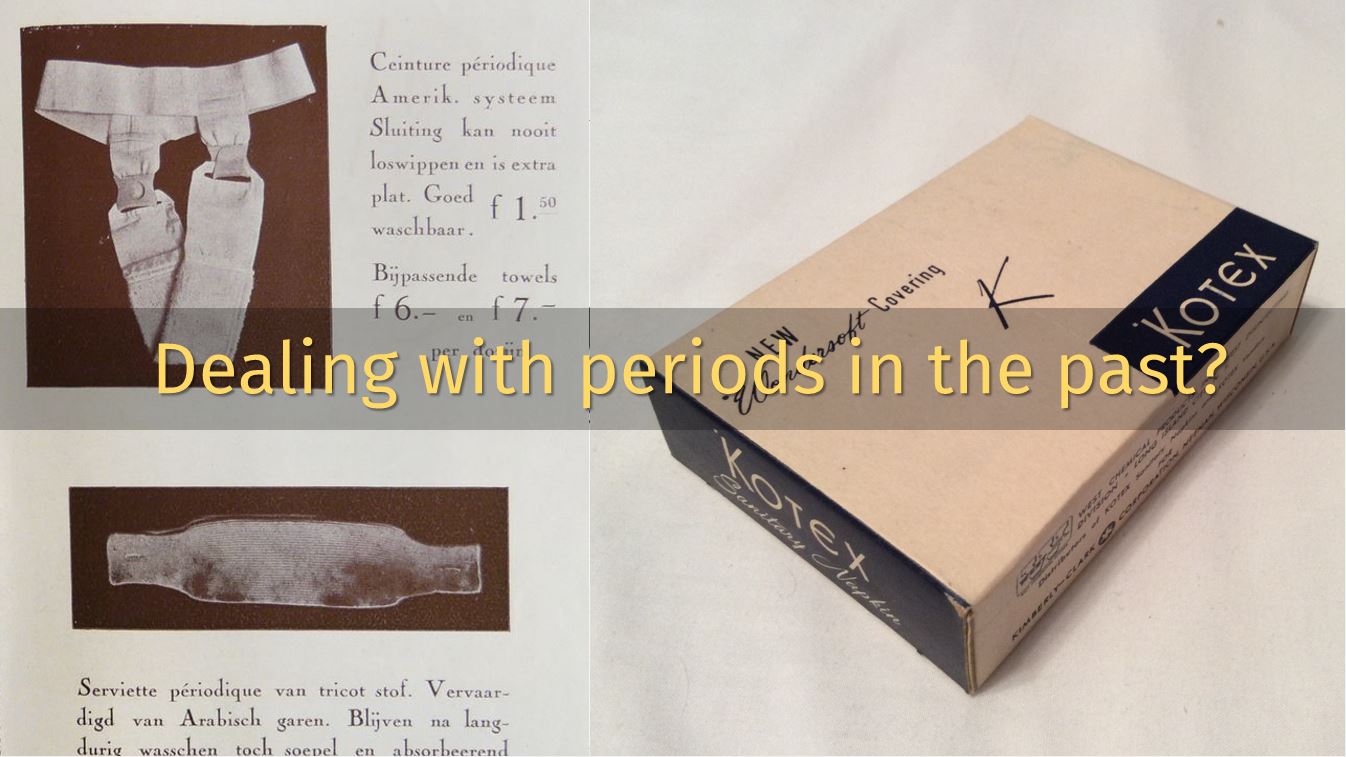Period tech has come a long way from the past, and we now have quite a wide range of options including menstrual cups, tampons and period-proof underwear.
But especially in still-conservative Singapore, sanitary pads still very much dominate the feminine hygiene market.
And there are many different types of pads to suit individuals' needs and preferences today, which might make one wonder how it was for our great-grandmothers and their moms and grandmas.
Literature on how women in Singapore historically dealt with periods appears to be quite sparse, probably because the conservative Asian mindset always discouraged (and let's admit, still discourages) open communication about menstruation.
But we found multiple 1900s advertisements for sanitary pads that provide some clues into what they were like:
The disposable pad
Before there were disposable pads, washable pads were attached to a belt worn around the waist.
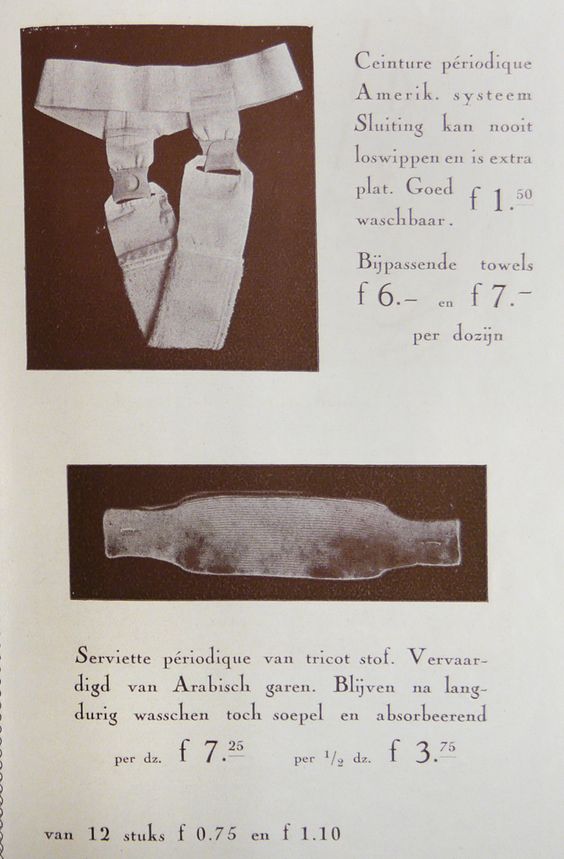 Photo via Pinterest
Photo via Pinterest
The disposable pad first went on sale in the U.S. in the late 1800s. According to Femme International, it was made from cotton and the liner ends were extended front and back so as to fit through loops in a sanitary belt.
Basically, disposable pads still had to be attached to a belt that looked something like this:
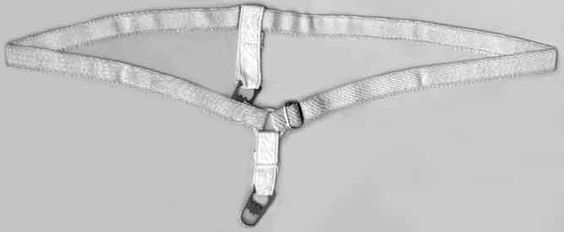 Belt from 1945. Photo via Pinterest
Belt from 1945. Photo via Pinterest
It is uncertain when disposable pads first arrived in Singapore. However, advertisements for these pads could be found in local newspapers from 1929 (and yes, they looked a lot like regular newspaper articles too):
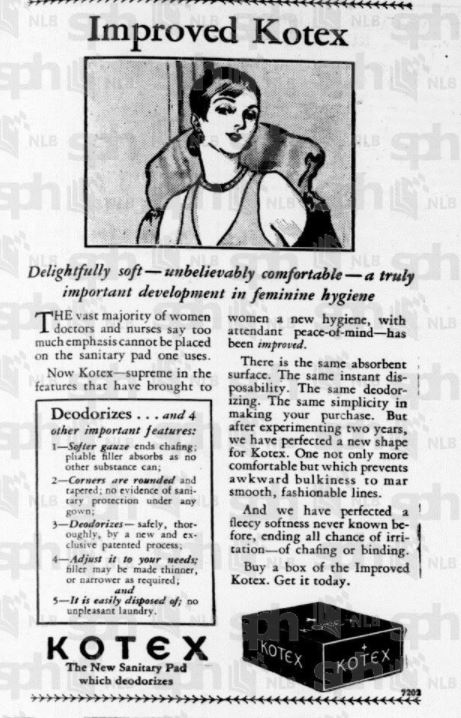 Screenshot from Newspaper SG
Screenshot from Newspaper SG
Ads featured active, busy women
Even though the products sold back then were obviously different from sanitary pads today in terms of design, sanitary pad advertisements in local newspapers in the past are strikingly similar to those today.
This is a screenshot from a Kotex ad in 2014, showing women dancing and jumping around in white pants:
 Screengrab via Youtube
Screengrab via Youtube
From the late 1920s to the 1940s, advertisements also showed women being able to play sports, go to work and wear light-coloured clothing, completely unfazed by their periods:
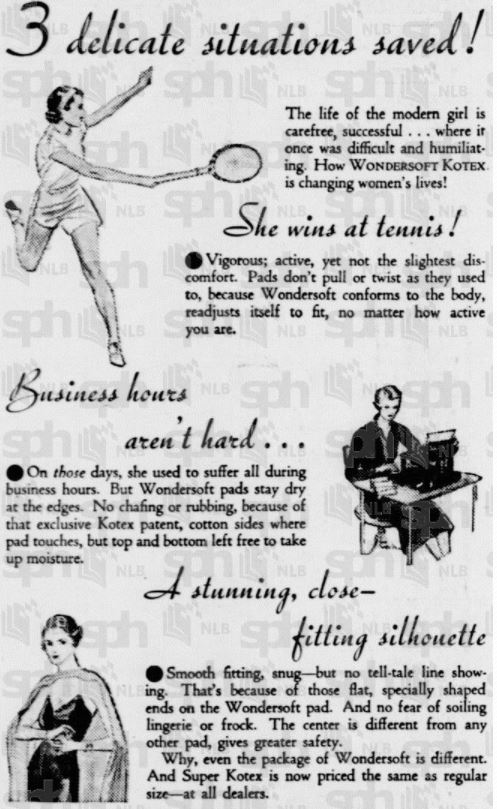 Ad from 1936. Screenshot from Newspaper SG
Ad from 1936. Screenshot from Newspaper SG
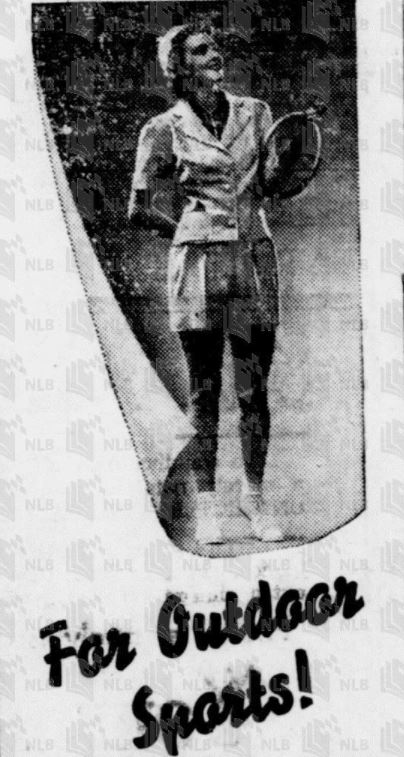 Screenshot from Newspaper SG
Screenshot from Newspaper SG
The text-heavy product ads boasted comfort, functionality and invisibility — key qualities that are still prized by women of today.
Given that periods were very much a taboo subject, being discreet about them was a priority. The pad was designed with rounded and tapered corners so "there is no evidence of sanitary protection under any gown".
For greater comfort, the advertisements promised "no chafing" as the pads had flat, tapered ends and were less bulky compared to previous designs.
The pads also claimed to be absorbent so there would be no leaks. To better suit each woman's needs, pads were sold in different sizes (regular, junior and super).
Sounds more familiar, right?
Improvements to pads
It was only in the 1960s, however, that individually-wrapped sanitary pads were introduced.
Before that, they came in a rectangular box with an opening to take them out one by one. A box from the 1940s-1950s might have looked like this (packaging in Singapore may vary):
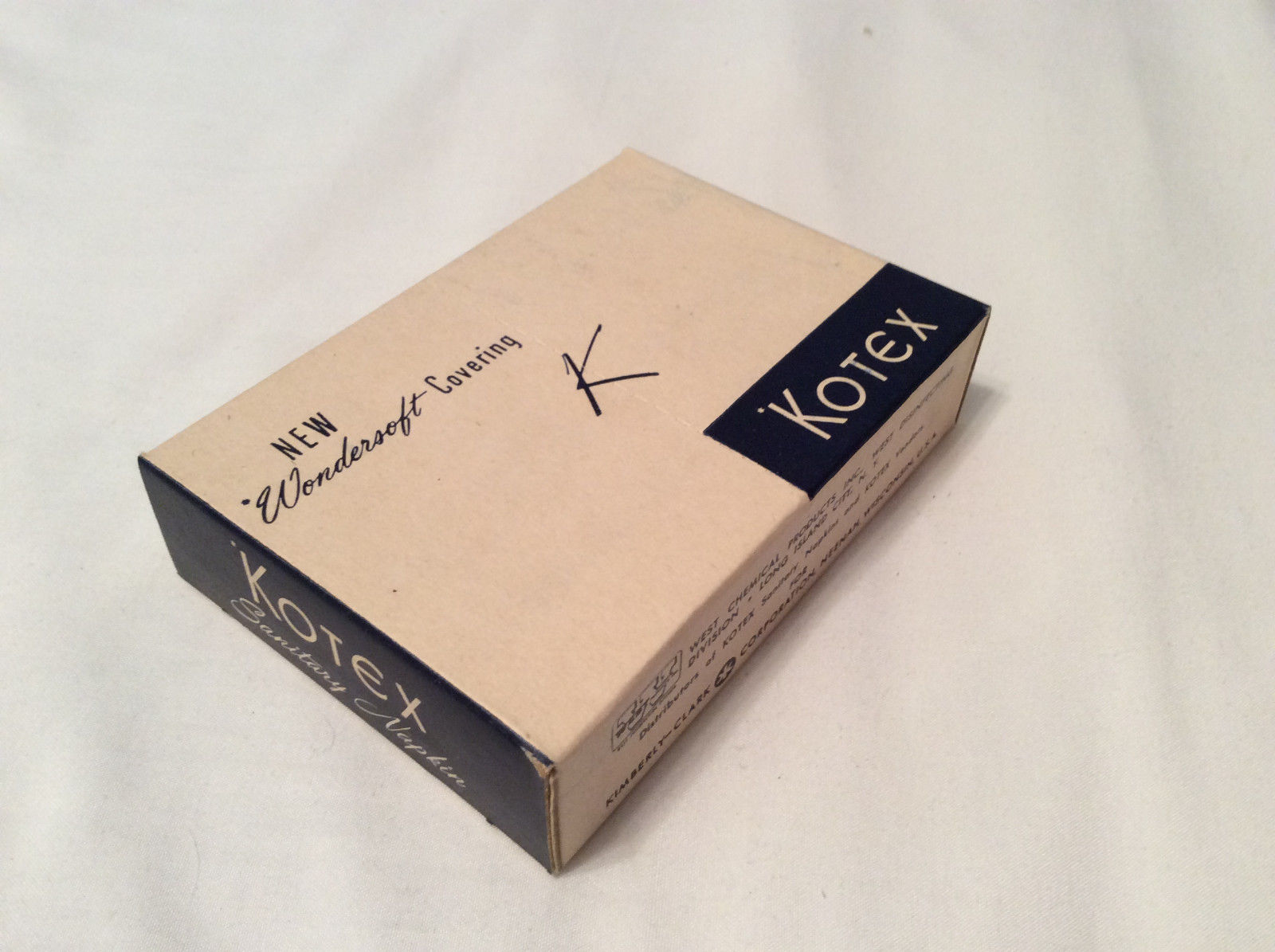 1940s-1950s Kotex box, USA. Photo via Ebay
1940s-1950s Kotex box, USA. Photo via Ebay
[related_story]
And it took about a decade longer for adhesive pads to be invented and introduced into the U.S. market, once again revolutionising the feminine hygiene scene with its comfort and convenience.
This is an advertisement of an adhesive pad in Singapore in 1979, where the cross section of the pad is shown.
Back then, the adhesive strip was much narrower, and pads did not come with wings yet:
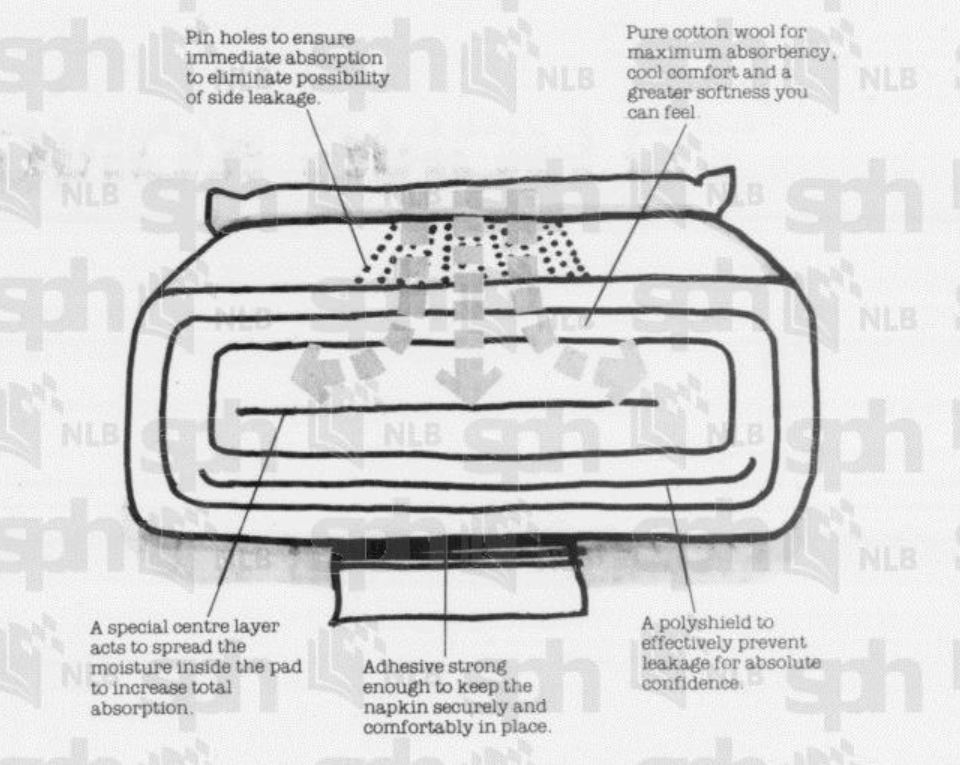 Screenshot from Newspaper SG
Screenshot from Newspaper SG
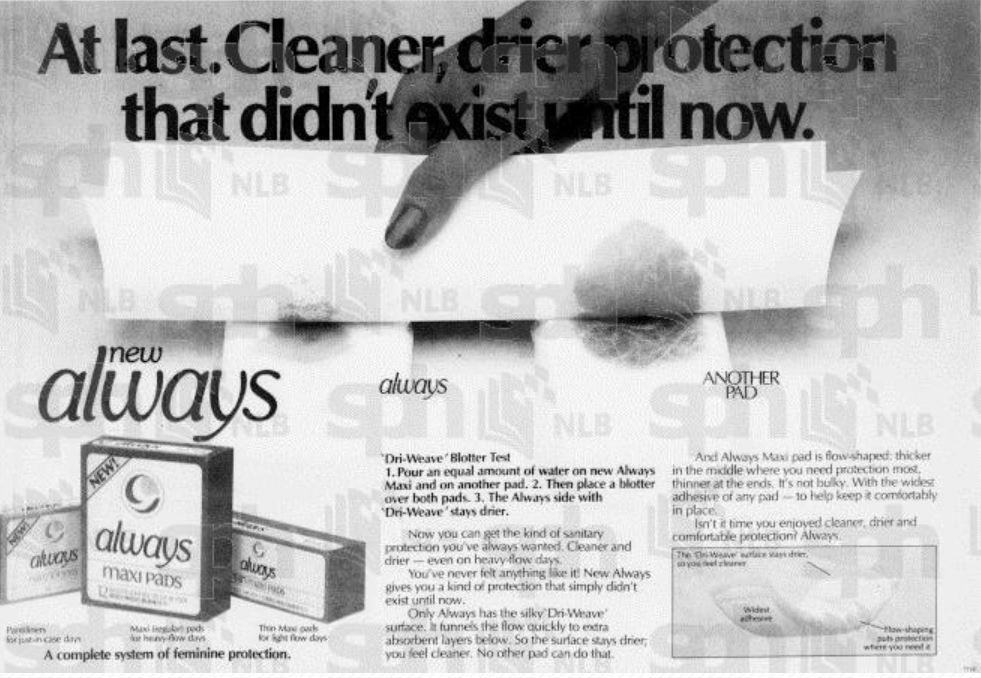 Advertisement from 1984. Screenshot from Newspaper SG
Advertisement from 1984. Screenshot from Newspaper SG
With the introduction of adhesive sanitary pads in Singapore, cumbersome sanitary belts were eventually phased out.
Further research has also led to greater improvements and variety in pad design, resulting in the sanitary pads of today.
Top photo adapted from Pinterest & Ebay.
If you like what you read, follow us on Facebook, Instagram, Twitter and Telegram to get the latest updates.
